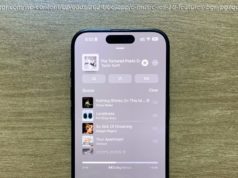Google Translate is an essential tool for any world traveller, but ChatGPT can perform miracles for less popular languages.
Affiliate links on Android Authority may earn us a commission. Learn more.
Published on11 seconds ago
If you’re a frequent traveler, Google Translate likely takes the top spot as the single most useful app on your smartphone. Communicating abroad can be difficult, after all, especially if it’s in an alphabet you’re not familiar with. But even though Google Translate has served me well for many years, it tends to fail at the most inopportune times. The solution? Using ChatGPT instead. It may sound clunky or unnecessary, but I assure you that the difference in translation quality is worth the jump from Google Translate to an AI chatbot like ChatGPT.ChatGPT vs Google Translate: Why I’m switching for good
I could bore you with an academic test comparing Google Translate and ChatGPT in two or more languages I’m familiar with. But instead, I’ll show you a couple of the many real-world instances during my travels where ChatGPT has blown Google Translate out of the water.
First, some background. Google Translate has been around for longer than modern large language models. It relies on a system of vocabulary matching and statistical models. While it has picked up some machine learning tricks in recent years, ChatGPT and Google’s own Gemini model have far more language training under their belt. Not to mention, the latter have been specifically fine-tuned for conversation and are capable of understanding cultural nuances. All of these differences add up to a much superior experience.
The difference between Google Translate and ChatGPT became painfully obvious on my last trip to Vietnam. Vietnamese, unlike many of the world’s most spoken languages, is a tonal language with a complex system of diacritics. Miss one diacritic and the meaning of the word can change drastically. For example, “cơm cháy” translates to “burnt rice” whereas “cơm chay” is “vegetarian rice”. That’s just one missing diacritic, and it happens often when you’re trying to use an average smartphone camera to translate the world around you.






